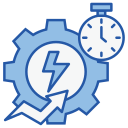
Managing Burnout and Stress While Working Remotely
Working from home should feel freeing, not draining. Here, we explore practical, compassionate ways to protect your energy, rebuild focus, and rediscover joy in your day. Today’s chosen theme: Managing Burnout and Stress While Working Remotely. Join our community, share your voice, and subscribe for weekly guidance you can actually use.
Spotting Remote Burnout Early
01
If you’re snapping at tiny requests, dreading Slack pings, or feeling oddly numb about wins, your nervous system might be overloaded. Notice patterns over a week, then tell us which signals show up for you. Your comment could help someone else feel seen—and start a kinder plan.
02
Brain fog, headaches, tight shoulders, or restless sleep often arrive before full burnout. Track when they spike: after late meetings, multitasking, or skipping breaks. Share your personal cues in the comments so we can build a reader-sourced checklist, and subscribe for a gentle reminder to pause at midday.
03
Burnout blends exhaustion, cynicism, and reduced efficacy. If weekends no longer restore you, it’s time to adjust workload, expectations, or habits. Tell us one small change you’ll test this week—an earlier shutdown, a boundary, or a break ritual—and we’ll cheer you on in next week’s roundup.

Refresh Routines and Micro‑Breaks That Work
The focused‑work cadence
Aim for focused sprints with real breaks. Some productivity studies suggest cycles like 52 minutes on and 17 off, but start with 50 and 10. During breaks, step away, hydrate, and look outside. Tell us your favorite cadence, and subscribe to get a timer template you can use tomorrow.
Movement snacks you’ll actually do
Two minutes of shoulder rolls, a hallway walk, or five squats reset your body and brain. One reader keeps a kettlebell by the door to nudge micro‑movement. What simple move lifts your mood fast? Share it so we can build a crowd‑curated menu of energizing breaks.
Mindful transitions between tasks
Before switching contexts, try three slow breaths, name your next intention, and release the last task. A designer told us this thirty‑second ritual saved her afternoons. Comment with your go‑to refocus phrase, and we’ll feature a few in next week’s mindful micro‑guide for remote days.

Notification hygiene that sticks
Batch alerts, mute nonessential channels, and set Do Not Disturb blocks before deep work. Luis cut fifty daily pings and said his evenings felt quieter within a week. What will you mute today? Share your top toggle below, and subscribe for our step‑by‑step notification sweep.

Meeting‑lite culture, even remotely
Default to 25‑minute meetings with agendas and clear owners. Try camera‑optional policies and no‑meeting blocks midweek. Replace status calls with written updates. Tell us one meeting you’ll convert to async, and we’ll send a template you can paste into your team’s doc today.

Async communication that reduces stress
Use shared docs, recorded walkthroughs, and decision logs to free people from constant availability. Set reply‑by windows instead of instant responses. What async tool changed your week for the better? Drop your pick and why; we’ll compile reader favorites into a living resource page.
Connection Without Exhaustion
Start meetings with a one‑minute pulse: rose (win), thorn (challenge), bud (opportunity). One team wrote that it surfaced blockers early and reduced venting later. Try it this week and tell us how it felt. Your story may inspire another team to adopt kinder habits.


Connection Without Exhaustion
Create triads that meet biweekly for problem‑solving and encouragement. Rotate facilitation and end with one concrete next step. A reader trio used pods to navigate a crunch month without burning out. Want a pod match? Comment “pod me,” and subscribe so we can introduce you by email.



Recovery, Rest, and a Sustainable Pace
01
Sleep as a strategic advantage
Protect seven to nine hours with a stable wind‑down: dim lights, close screens early, and keep the room cool. If anxiety spikes at night, try a quick brain dump. Share your best sleepy‑time tip, and subscribe for our Sunday reset so Mondays feel less like a cliff.
02
Active recovery on off‑days
Lean into walks, cooking, or hands‑on hobbies. Creative rest helps your brain reconnect ideas without pressure. One subscriber relearned guitar and noticed calmer Mondays. What hobby awaits you? Tell us below, and we’ll feature community ideas to inspire gentle, screen‑free weekends.
03
Knowing when to ask for help
If tasks feel impossible, joy is absent, or panic visits daily, it’s time to talk—manager, mentor, or a licensed professional. Many employers offer confidential counseling. Share resources you trust, and if you need a nudge, comment “support,” and we’ll reply with a simple next step.
